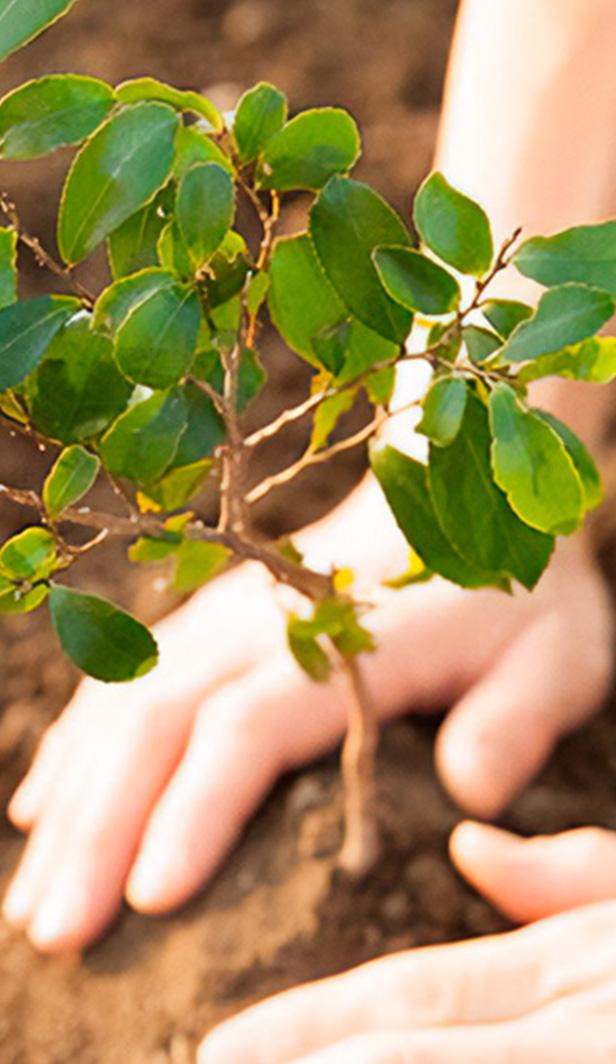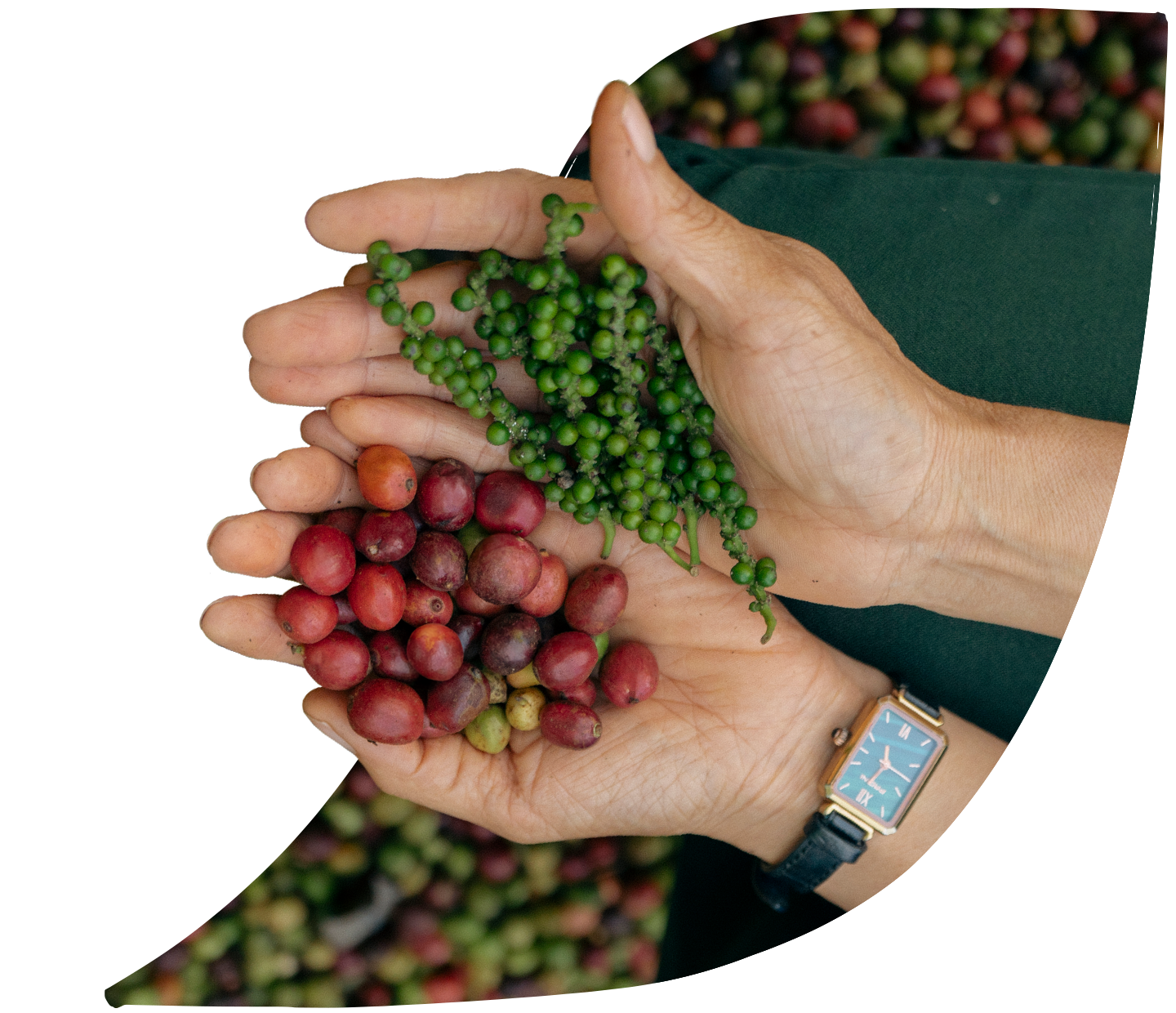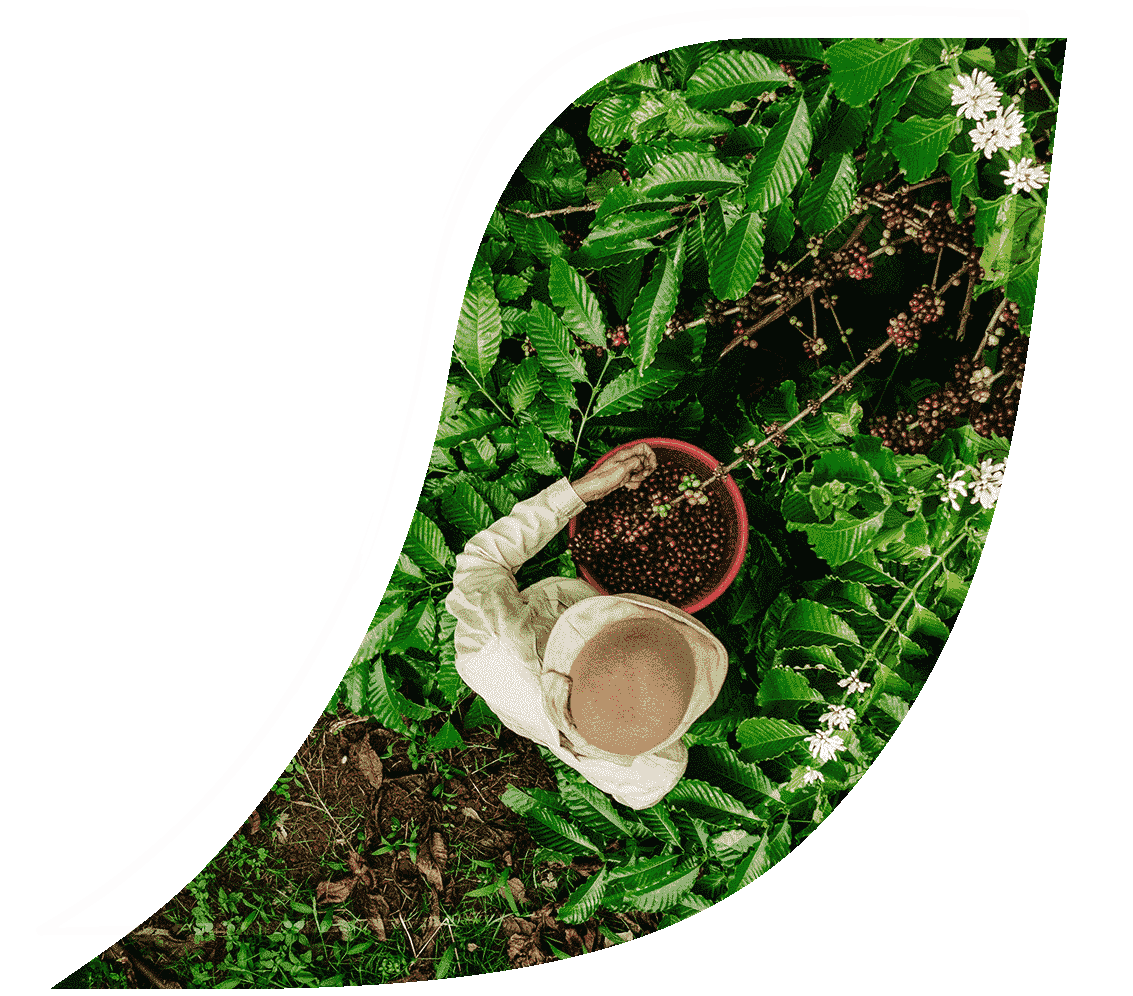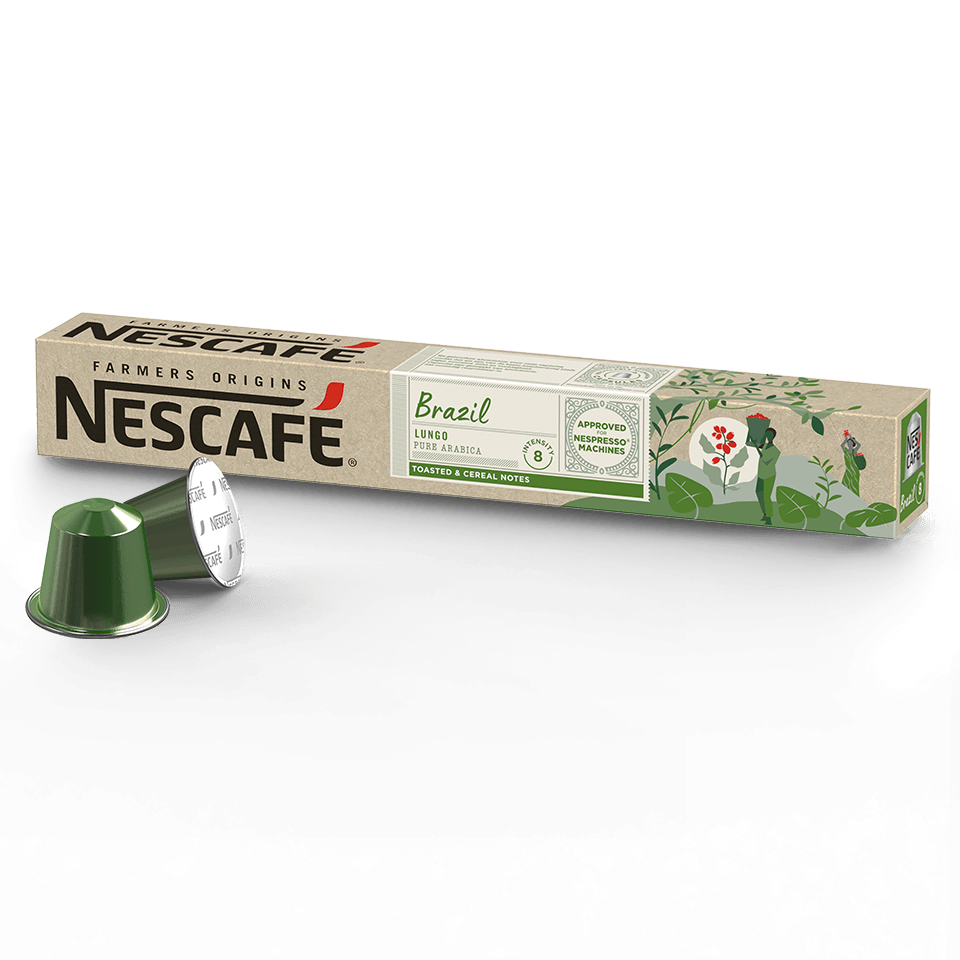Healthy Soil

Working with Nature

Working with Nature
Farming Smarter
Natural crop nourishing
Growing coffee in harmony
Diverse Crop Cultivation
Today's community favourites

Biodiversity

Coffee Loves Shade
Along with Sâm and other farmers around the world we host interactive training sessions where we explain the benefits of growing trees within coffee farms. This provides shade, can improve biodiversity, protect water bodies, reduce soil erosion and increase organic matter, while removing carbon from the atmosphere.
But it’s not a one size fits all solution. Here we use our scientific expertise and extensive local knowledge to find the best companion for the coffee trees in each region.

Regenerative Agriculture In Coffee

Intercropping
Implementing regenerative farming practices like crop rotation in coffee farming can lead to increased yields, disease resistance, healthier soils, and reduced erosion.1
Intercropping stands as one of multiple ways to implement regenerative coffee farming; where diverse crops coexist harmoniously in shared fields and biodiversity. Through this approach, farmers help in enriching soil, making it easier to control pests, and fortifying crop resilience.
Why intercropping?

What does Intercropping mean to us?


- The Nestle Agriculture Framework:https://www.nestle.com/sites/default/files/2022-07/nestle-agriculture-framework.pdf
- Benefits and Risks of Intercropping for Crop Resilience and Pest Management:https://academic.oup.com/jee/article/115/5/1350/6572575
Closing The Loop
Creating a better future for coffee means finding more ways to use spent coffee beans. By converting it into biofuel, we’ve managed to lower our carbon footprint at many of our factories – preventing 195 000 tonnes of carbon from being released into the atmosphere every year.1
Biofuel is renewable energy source made from natural materials; in our case it’s made from coffee grounds or coffee by products, which we then use to help partly power our steam boilers, and also to help keep the lights on at 7 of our 8 factories around the world.
We’re helping farmers in Vietnam to cut water use in irrigation by 40% through more efficient regenerative farming practices such as reducing the amount of water run off, pooling and evaporation after watering. This benefits the farmers directly by reducing their water bills and benefits surrounding communities by giving them access to more water.2
Making high-quality coffee requires time, energy and resources. That’s why we’re constantly looking for ways to build more circular economies where waste is reduced and wherever possible raw materials are reused - especially when it comes to using natural resources.
At local farms, we’re helping to improve irrigation techniques which can reduce water usage while maintaining productivity. At our Tri An factory in Bien Hoa (Dong Nai province) we are using coffee grounds as biofuel to partially power our boilers and lights.
We're also training farmers to introduce diverse and regenerative farming techniques, including the planting of additional tree species at coffee farms. These methods not only enhance soil health but also reduce the need for chemical fertilizers.
Reducing water usage and reducing waste production, but still making quality coffee. It’s a dream for coffee lovers – but it’s a reality for us, and one we’re taking seriously. Together, we can support coffee farmers to run more efficient, more economical farms and in so doing, help build a more sustainable future for coffee, for everyone.3
Today’s community favourites
Discover some of the most enjoyed articles from across the site

Discover how Nescafé is sourcing coffee responsibly
What does «responsibly sourced» mean in our value chain?

Working together
Our coffee is traceable to the group of farms where it was grown and verified in accordance to sustainability standards from independent certifier programmes.
At Nescafé, we work with various external programmes who are independent third-party organizations, such as 4C, Rainforest Alliance, which have established their own publicly available sustainability standards.
The sustainability standards of the external programmes we work with, meet our Nestlé Responsible Sourcing Core Requirements, that encompass various aspects of coffee farming, including social and environmental practices, for example farmer's working conditions, optimizing soil fertilizers, among others.

Taking actions with purpose
We are taking actions to continue supporting coffee farmers in their communities wherever they are, so that they can improve their lands & livelihoods. Here below some examples of initiatives:
- • Supporting coffee farm renovation for better resilience and quality, by distributing over 290 million coffee plantlets since 2010.
- • Through more than 800 agronomists and across 16 countries, enabling more than 148’000* coffee farmer trainings every year to improve their farming practices.

Today’s community favourites

Growing With Coffee

Phung Thi Ha Lan believes engineering can make a difference. Always keen to learn and progress, she didn’t think twice when offered the opportunity to help build the Tri An NESCAFÉ® Roastery. “During the design phase for the factory, we already considered sustainability in our process,” she says. Now the Industrial Service Manager in the Engineering Department, her roles and responsibilities include taking care of maintenance operations, and improvements to the system.
Solutions-driven and passionate about everything she does, Lan is incredibly close to her team, and on a constant mission to keep them inspired. This passion goes beyond the workplace. She often hosts knowledge-sharing sessions with university students where they discuss the purpose of engineering. In addition to explaining how the factory operates, she encourages these young women to explore more technical careers and become part of the next generation of engineers.
A mother of three, Lan understands the importance of work-life balance. She makes every effort to spend quality time with her kids, using these opportunities to tell them about her work, and how she’s contributing to a better future. “I explain to them, in a simple way, how we care about sustainability, because they also learn about environmental protection in school,” she says. Once, after doing this, one of her children announced a desire to become an engineer too. “I felt very proud,” smiles Lan.
"In addition to learning how to be a better farmer, I learn about business* to improve the lives of my family and my community."

Farming methods evolve over time, and nobody knows this more than Tran Thi Lien. A second generation farmer, she studied regenerative agricultural practices to make her farm more successful. She learnt techniques that reduced time and labour, and adopted intercropping, introducing plants that increase her farm’s productivity. The results were transformative, and now her farm functions as a business. “I have increased the efficiency of land use, thereby increasing my family's income,” she says.
Tran Thi Lien's deep knowledge helped her secure additional work as a lead farmer. She shares technical support and encouragement, inspiring others in her community to adopt regenerative agriculture practices. “The first thing is to introduce knowledge,” she says, believing that this will help other farmers prosper too.
Lien has noticed a positive change in lifestyle among her fellow farmers. She believes that by employing regenerative agriculture practices, they are farming more efficiently. “They have more time to spend with their families,” she says. These advanced methods have also contributed to farmers producing higher yields, leading to greater prosperity. “I'm so proud. I'm very happy,” she smiles. “Not only can I help myself, but I can also help the others.”


Today’s community favourites

*Through the Nescafé partnership with GIZ’s Coffee++ program, farmers participate in a five-day intensive course designed to help them run their farms as businesses. NESCAFE Plan 2023, page 13: https://www.nestle.com/sites/default/files/2024-05/nescafe-plan-2030-progress-report-2023.pdf
Pack to the Future

-
recyclable jarrecyclable jar
-
made with responsibly sourced coffeemade with responsibly sourced coffee
NESCAFÉ® Classic
Your NESCAFÉ® jar's journey doesn't end when the coffee does. The jar is recyclable, making it a little easier to make a difference. Glass is infinitely recyclable, and the plastic lids can be recycled separately.

-
recyclable jarrecyclable jar
-
made with responsibly sourced coffeemade with responsibly sourced coffee
NESCAFÉ® GOLD
Your NESCAFÉ® jar's journey doesn't end when the coffee does. The jar is recyclable, making it a little easier to make a difference. Glass is infinitely recyclable, and the plastic lids can be recycled separately.

-
97%less packaging weight*less packaging weight*
-
made with responsibly sourced coffeemade with responsibly sourced coffee
NESCAFÉ® GOLD Soft Pack
NESCAFÉ® GOLD is now available in 150g soft packs, perfect for refilling your glass jar. These recyclable packs use 97% less packaging. *compared to our glass jars, with a resealable top to preserve the freshness and taste NESCAFÉ® is known for.

-
mono-structured plasticmono-structured plastic
-
designed to recycledesigned to recycle
NESCAFÉ® 3in1
Our new mono-structure sachets only use one type of plastic, so they’re designed for recycling, yet they keep your coffee just as fresh as before. It's the same great coffee, but in new packs that are easier to recycle.
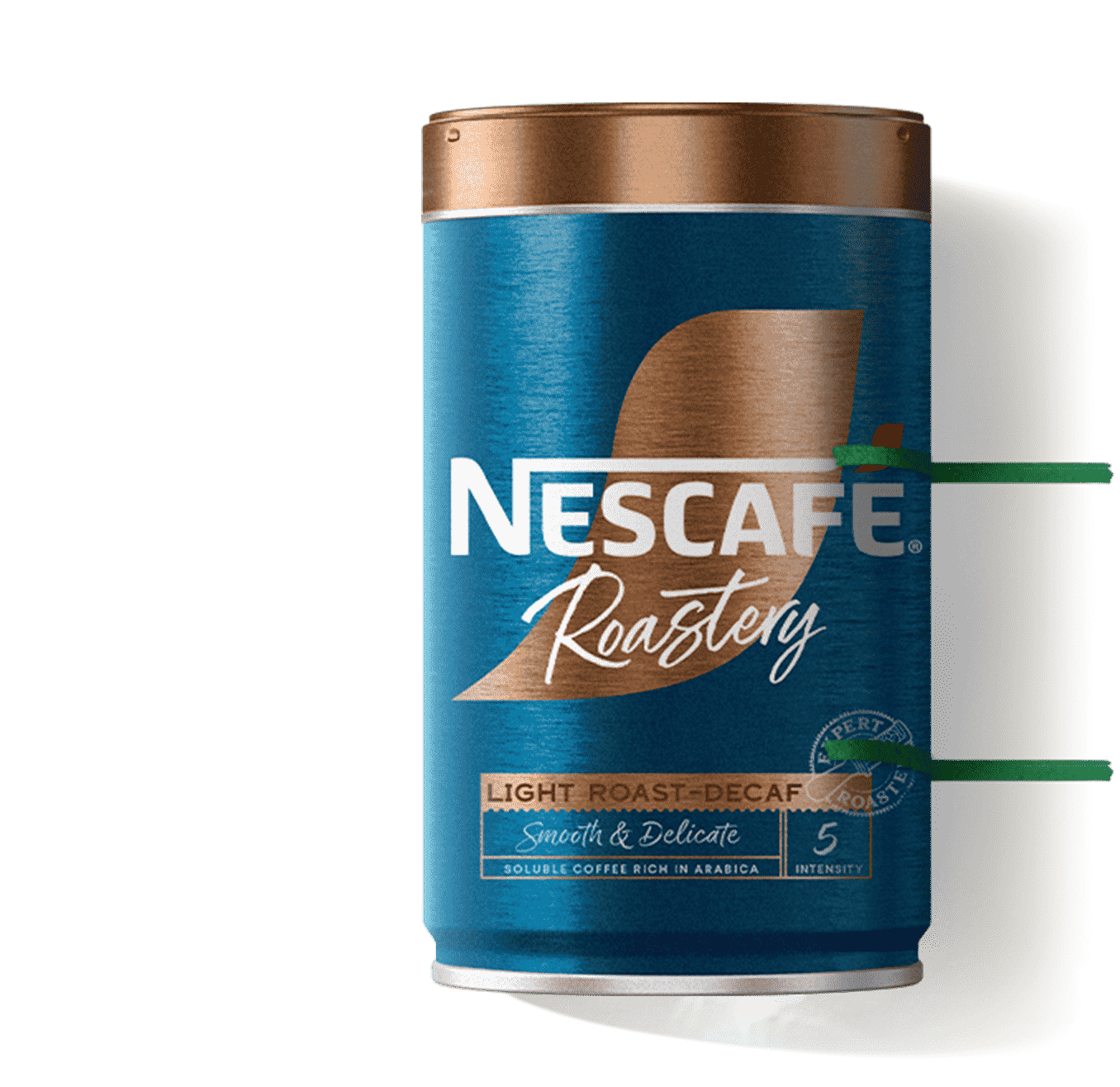
-
recyclable metal tinrecyclable metal tin
-
made with responsibly sourced coffeemade with responsibly sourced coffee
NESCAFÉ® Roastery
Did you know that our Roastery metal tin and lid are recyclable? And this packaging helps to perfectly preserve NESCAFÉ®'s flavour, colour and aroma. So, enjoy your NESCAFÉ® and remember to give your tin a second life!

-
95%made of papermade of paper
-
made with responsibly sourced coffeemade with responsibly sourced coffee
NESCAFÉ® Cappuccino
We're excited to present our delicious cappuccino coffee, topped with a creamy long-lasting froth, now in a brand new paper tin pack, which is recyclable as it's made of 95% paper. Now you can have your NESCAFÉ®, and help make a difference too!

-
80%recycled alluminiumrecycled alluminium
-
made with responsibly sourced coffeemade with responsibly sourced coffee
NESCAFÉ® Farmers Origins Capsules
Why do we make our capsules with aluminium? Because it's recyclable and it retains our coffee's freshness and taste. At least 80% of the aluminium in NESCAFÉ® Farmers Origins coffee capsules is of recycled origin. That's good for coffee drinkers and the world.



